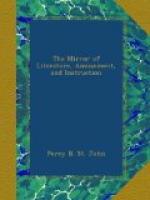Peter Paul Rubens was of a distinguished family at Antwerp; but his father being (says Pilkington) under the necessity of quitting his country, to avoid the calamities attendant on a civil war, retired for security to Cologne; and during his residence in that city Rubens was born, in 1577. The day of his nativity was the Feast of St. Peter and St. Paul; and thence he received at the baptismal font the names of these apostles.
Having been absent from his native country eight years, he was summoned home by the repeated illness of his mother; but, though he hastened with all speed, he did not reach Antwerp in time to afford his beloved parent the consolations of his presence and affections. The loss of her affected him deeply; and he intended, when he had arranged his private affairs, to go and reside in Italy; but the Archduke Albert and the Infanta Isabella exerted their interest to retain him in Flanders, and in their service. He consequently established himself at Antwerp, where he married his first wife, Elizabeth Brants, and built a magnificent house, with a saloon in form of a rotunda, which he enriched with antique statues, busts, vases, and pictures, by the most celebrated masters; and here, surrounded by works of art, he carried, (says his biographer,) into execution those numberless productions of his prolific and rich invention, which once adorned his native country, but now are become the spoil of war, and the tokens of conquest and ambition, shining with equal lustre among super-eminent productions of painting in the gallery of the Louvre.
The whole of the paintings, except two, which adorn the gallery of the Luxembourg, were executed at Antwerp, by Rubens, for Mary de Medici.




